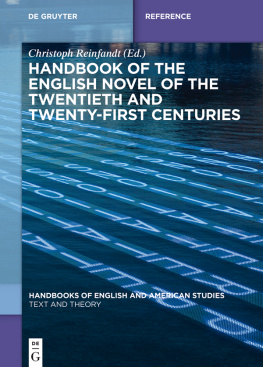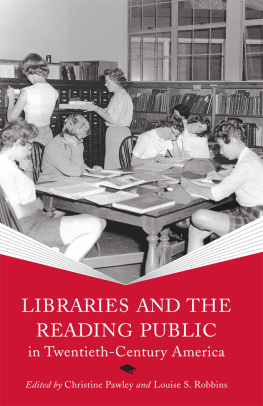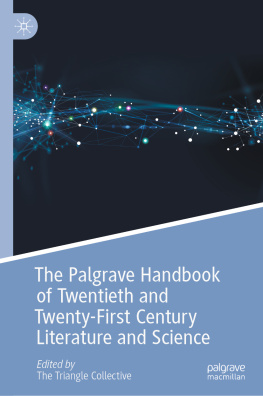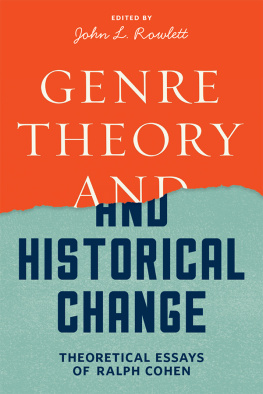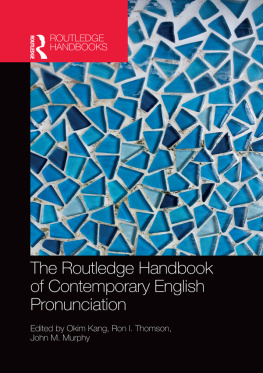Contents
Guide

Handbook of the English Novel of the Twentieth and Twenty-First Centuries
Handbooks of
English and American Studies

Edited by
Martin Middeke, Gabriele Rippl, Hubert Zapf
Advisory Board
Derek Attridge, Elisabeth Bronfen, Ursula K. Heise, Verena Lobsien,
Laura Marcus, J. Hillis Miller, Martin Puchner
Volume 5

ISBN 978-3-11-037446-9
e-ISBN (PDF) 978-3-11-036948-9
e-ISBN (EPUB) 978-3-11-039336-1
Library of Congress Cataloging-in-Publication Data
A CIP catalog record for this book has been applied for at the Library of Congress.
Bibliographic information published by the Deutsche Nationalbibliothek
The Deutsche Nationalbibliothek lists this publication in the Deutsche Nationalbibliografie; detailed bibliographic data are available in the Internet at http://dnb.dnb.de.
2017 Walter de Gruyter GmbH, Berlin/Boston
www.degruyter.com
Editors Preface
This De Gruyter handbook series has been designed to offer students and researchers a compact means of orientation in their study of Anglophone literary texts. Each volume involving a particular historical or theoretical focus introduces readers to current concepts and methodologies, as well as academic debates by combining theory with text analysis and contextual anchoring. It is this bridging between abstract survey and concrete analysis which is the central aim and defining feature of this series, bringing together general literary history and concrete interpretation, theory and text. At a time when students of English and American literary studies have to deal with an overwhelming amount of highly specialized research literature, as well as cope with the demands of the new BA and MA programs, such a handbook series is indispensable. Nevertheless, this series is not exclusively targeted to the needs of BA and MA students, but also caters to the requirements of scholars who wish to keep up with the current state of various fields within their discipline.
Individual volumes in the De Gruyter Handbook series will typically provide:
knowledge of relevant literary periods, genres, and historical developments;
knowledge of representative authors and works of those periods;
knowledge of cultural and historical contexts;
knowledge about the adaptation of literary texts through other media;
knowledge of relevant literary and cultural theories;
examples of how historical and theoretical information weaves fruitfully into interpretations of literary texts.
Internationally renowned colleagues have agreed to collaborate on this series and take on the editorship of individual volumes. Thanks to the expertise of the volume editors responsible for the concept and structure of their volumes, as well as for the selection of suitable authors, HEAS not only summarizes the current state of knowledge in the field of Anglophone literary and cultural studies, but also offers new insights and recent research results on the most current topics, thus launching new academic debates.
We would like to thank all colleagues collaborating in this project as well as Dr. Ulrike Krauss at De Gruyter without whose unflagging support this series would not have taken off.
The first volumes include:
Gabriele Rippl (ed.): Handbook of Intermediality
Hubert Zapf (ed.): Handbook of Ecocriticism and Cultural Ecology
Julia Straub (ed.): Handbook of Transatlantic North American Studies
Timo Mller (ed.): Handbook of the American Novel of the Twentieth and Twenty-First Centuries
Christoph Reinfandt (ed.) Handbook of the English Novel of the Twentieth and Twenty-First Centuries
Ralf Haekel (ed.): Handbook of British Romanticism
Ralf Schneider and Jane Potter (eds.): Handbook of British Literature and Culture of the First World War
Martin Middeke and Monika Pietrzak-Franger (eds.): Handbook of the English Novel, 18301900
Ingo Berensmeyer (ed.): Handbook of English Renaissance Literature
Sebastian Domsch, Dan Hassler-Forest and Dirk Vanderbeke (eds.): Handbook of Comics and Graphic Narratives
Christine Gerhardt (ed.): Handbook of the American Novel of the Nineteenth Century
Barbara Schaff (ed.): Handbook of British Travel Writing
Martin Middeke
Gabriele Rippl
Hubert Zapf
June 2017
Christoph Reinfandt
0Introduction
1Why a Handbook of the English Novel of the Twentieth and Twenty-First Centuries ?
The title of this handbook invites a number of pertinent questions: Why English and not British? Why Novel and not Fiction? And finally: Why the Twentieth and Twenty-First Centuries and not only the Twentieth Century or, as is rather common in the field, either the first half of the century under the rubric of modernism or the second half of the century under the rubrics of postmodernism and contemporary?
The first two questions can be answered together: The English Novel is taken to be a distinct discursive formation which transcends its regional grounding in the United Kingdom of Great Britain to a certain extent, though the founding of the latter with the 1707 Acts of Union between the kingdoms of England, Wales and Scotland roughly coincided with the emergence of the new genre in the early eighteenth century. Though it was of course rooted in it, the novel transcended this narrower context from the very beginning because it turned out to be much more than just a new genre of literature in England and/or Britain. Instead, the rise of the novel in England in many respects anticipated the rise of the novel as a modern genre in many national contexts and can thus be seen as paradigmatic ( 1 The English Novel as a Distinctly Modern Genre). What is more, the coincidence and complicity of the English language with British imperialism also made sure that there was something which could be called The World Novel in English (Crane et al. 2016) from a very early stage of its development, and this global dimension has become even more prominent at the latter end of the English novels trajectory (cf. Goodlad 2015, and Arac 2015). This is prominently reflected by The Oxford History of the Novel in English , in which The World Novel in English to 1950 (Vol. 9, Crane et al. 2016) is supplemented with three more final volumes entitled The Novel in English in South and South-East Asia since 1945 (Vol. 10, edited by Alex Tickell, forthcoming), The Novel in Africa and the Atlantic World since 1950 (Vol. 11, edited by Simon Gikandi, forthcoming), and The Novel in Australia, Canada, New Zealand, and the South Pacific since 1950 (Vol. 12, edited by Coral Ann Howells et al., forthcoming). of the handbook is rounded off with two inquiries into the ideological dimensions of this discursive formation, which, as a consequence of its particular character, hovers uneasily but productively between complicity and critique in terms of gender, class and ethnicity ( 4 Gender; 5 The Burden of Representation). In view of this particular angle, it seemed counterproductive to replace the category novel (which indicates the full range of values it came to imply at different times in its long history) with the category of fiction (which had clearly pejorative implications at the beginning of the novels history and only acquired a neutral or even positive standing of late).

